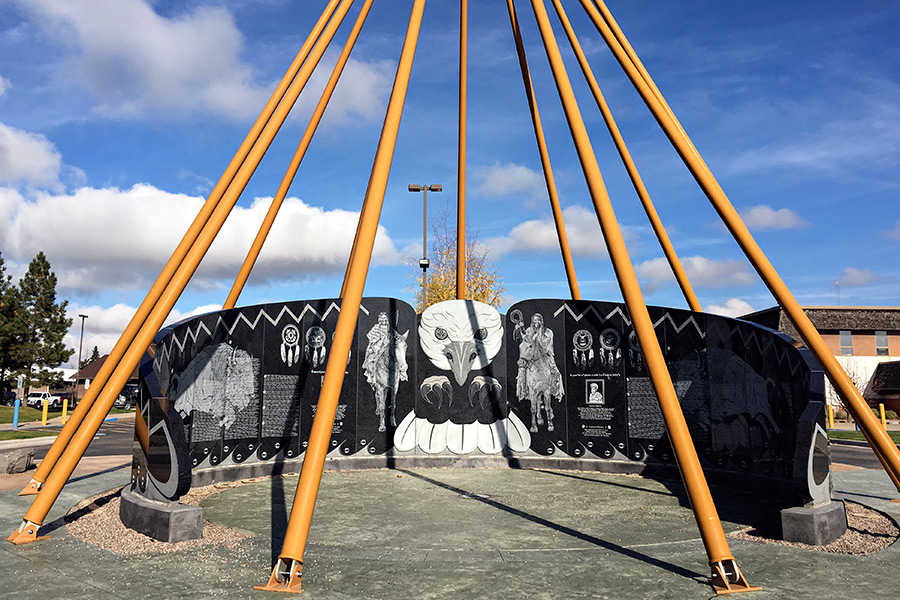CSKT Monument Honors Strong Tradition of Service Among Tribal Members
Monument in Pablo features over 1,300 names of veteran tribal members dating back to 1877, including World War II hero Louis Charlo
By Dillon Tabish
The famous battle of Iwo Jima, which involved more than 100,000 American and Japanese fighters in World War II, is often remembered through the iconic photograph showing U.S. Marines of the 28th Regiment of the Fifth Division raising the flag atop Mt. Suribachi on Feb. 23, 1945.
Yet largely forgotten in history is the actual first flag raising, a monumental moment that occurred earlier that day and involved Louis Charlo, a member of the Bitterroot Salish Tribe of Montana who enlisted in the Marine Corps at 17 out of Missoula.
Charlo was part of the group of Marines who successfully ascended the mountain and placed a small U.S. flag from the USS Missoula atop the summit.
The battle was eventually declared an American victory but not until after five weeks of some of the fiercest fighting in the Pacific Theatre. More than 6,800 American soldiers were killed at Iwo Jima. That included Charlo, who was killed less than a week after the flag raising while trying to rescue another wounded soldier.
Seventy years later, Charlo’s valor is memorialized alongside over 1,300 other tribal members in Pablo, where the Confederated Salish and Kootenai Tribes have constructed the Eagle Circle Veterans Wall of Remembrance.
Built in 2010, the large monument near tribal headquarters depicts an eagle wrapping its wings around the names of tribal veterans. A brief biography and image of Charlo is featured near the center, sharing his courageous story that reflects a deeply rooted “warrior spirit” that spans across the tribe of nearly 8,000 members today.
American Indians have a prominent history of serving in the U.S. military, dating back to the Nez Perce War of 1877, when tribal members in Montana were scouts for U.S. forces. Perhaps most famous were the Native American Code Talkers who served in World Wars I and II.
According to census data, American Indians serve in the U.S. military in greater numbers per capita than any other ethnic group.
“Most tribes have a warrior tradition. Ours has always been a relatively peaceful tradition, but tribes have had a history of being ready to defend the home and the people,” Ruth Swaney with the CSKT said.
Swaney helps keep track of tribal members on the Flathead Indian Reservation who have served, and she has 74 more names to add to the monument in Pablo. There are 318 tribal members on record living on the Flathead Reservation who are veterans, according to Swaney.
The CSKT monument serves as a point of pride and a way to remember the strong heritage that lives within the reservation, she said.
A special ceremony honoring tribal veterans is scheduled for Nov. 6-7 in Pablo at the Salish and Kootenai College. Events start at 5 p.m., Nov. 6 and 1 p.m., Nov. 7.